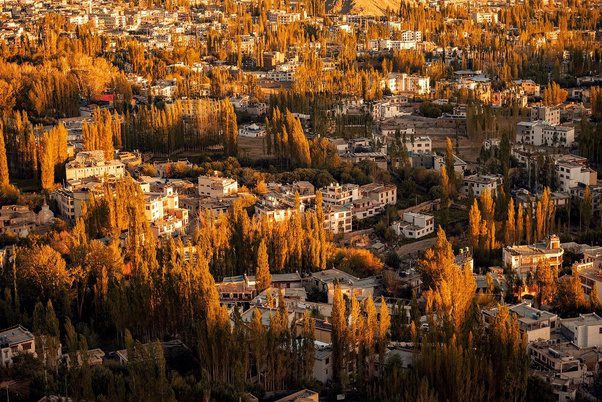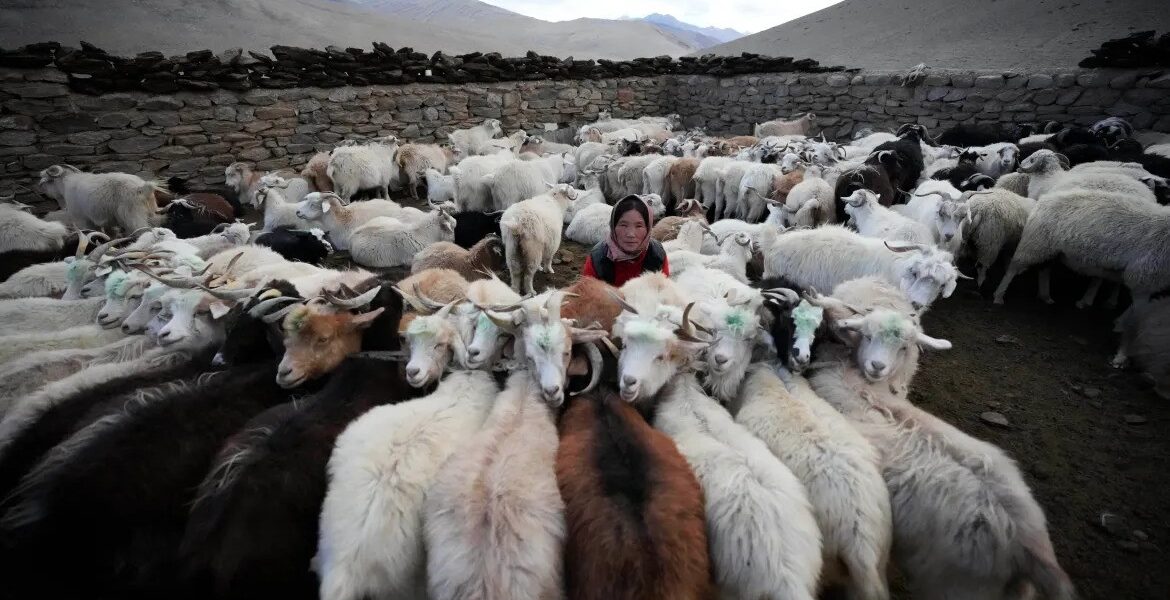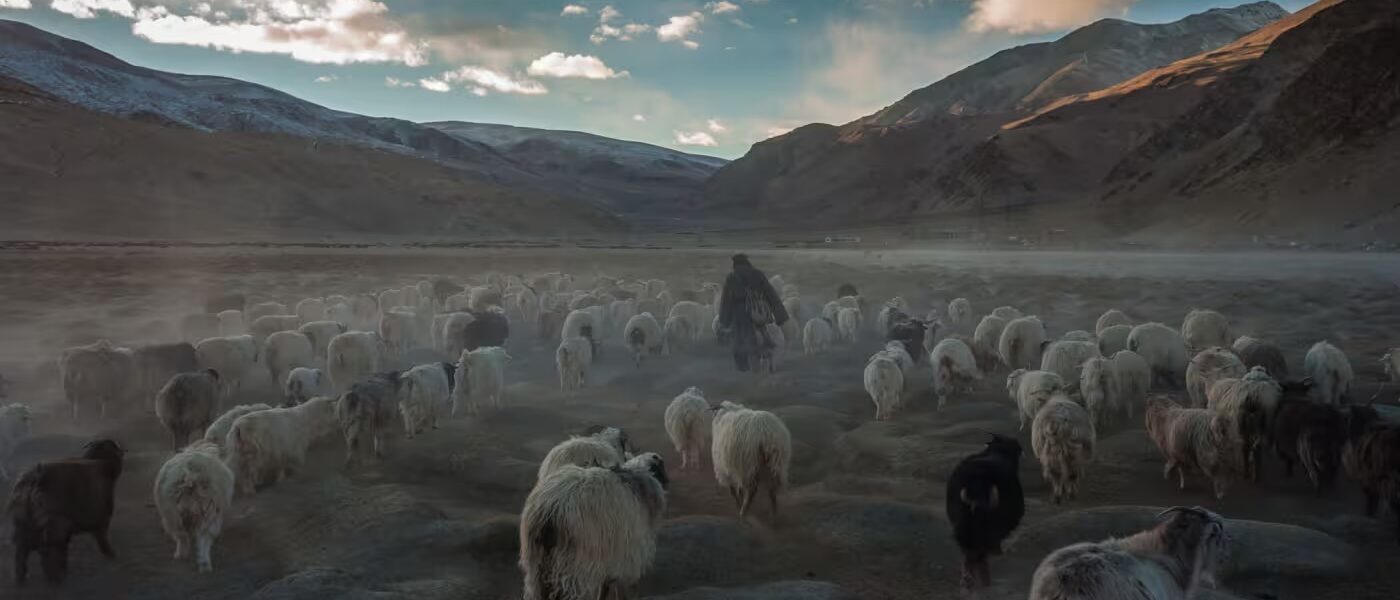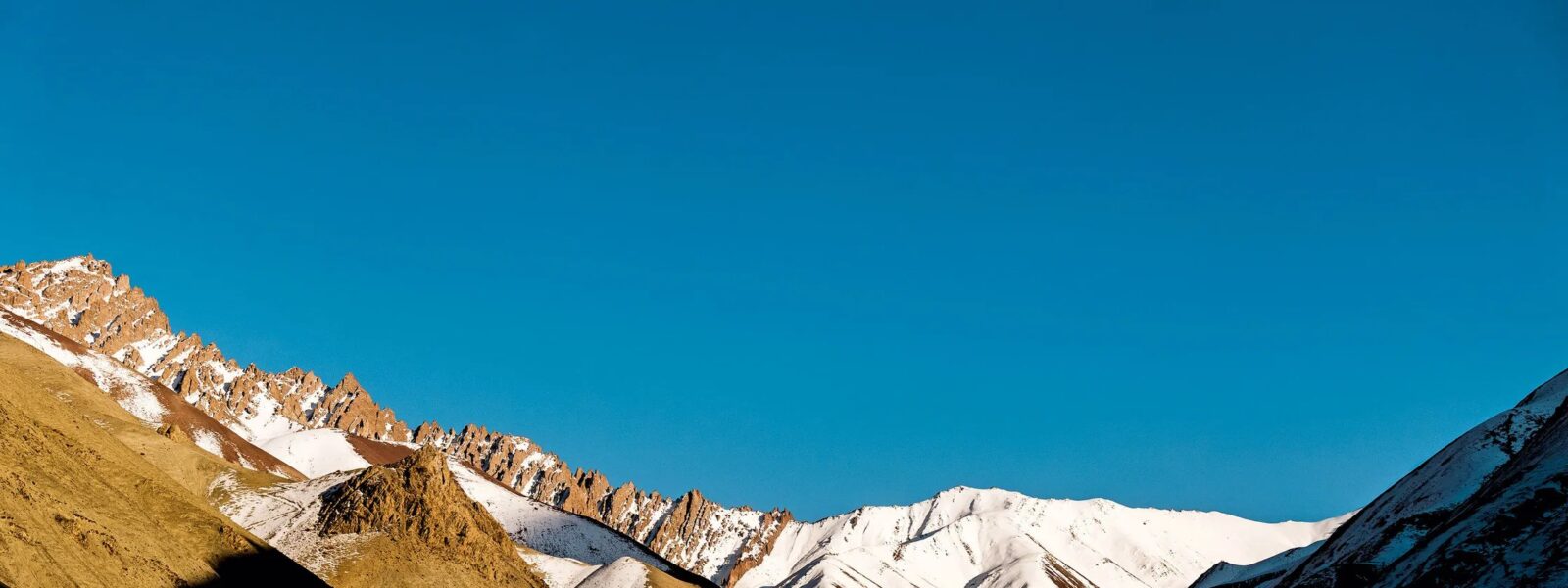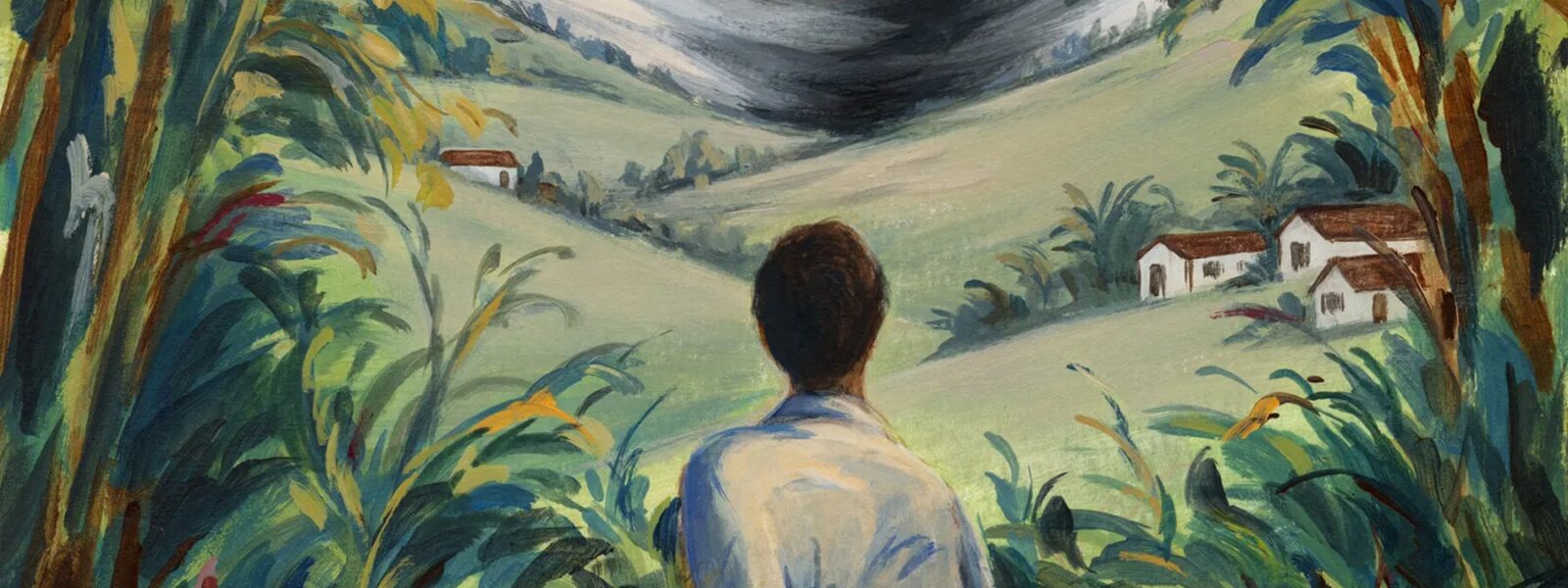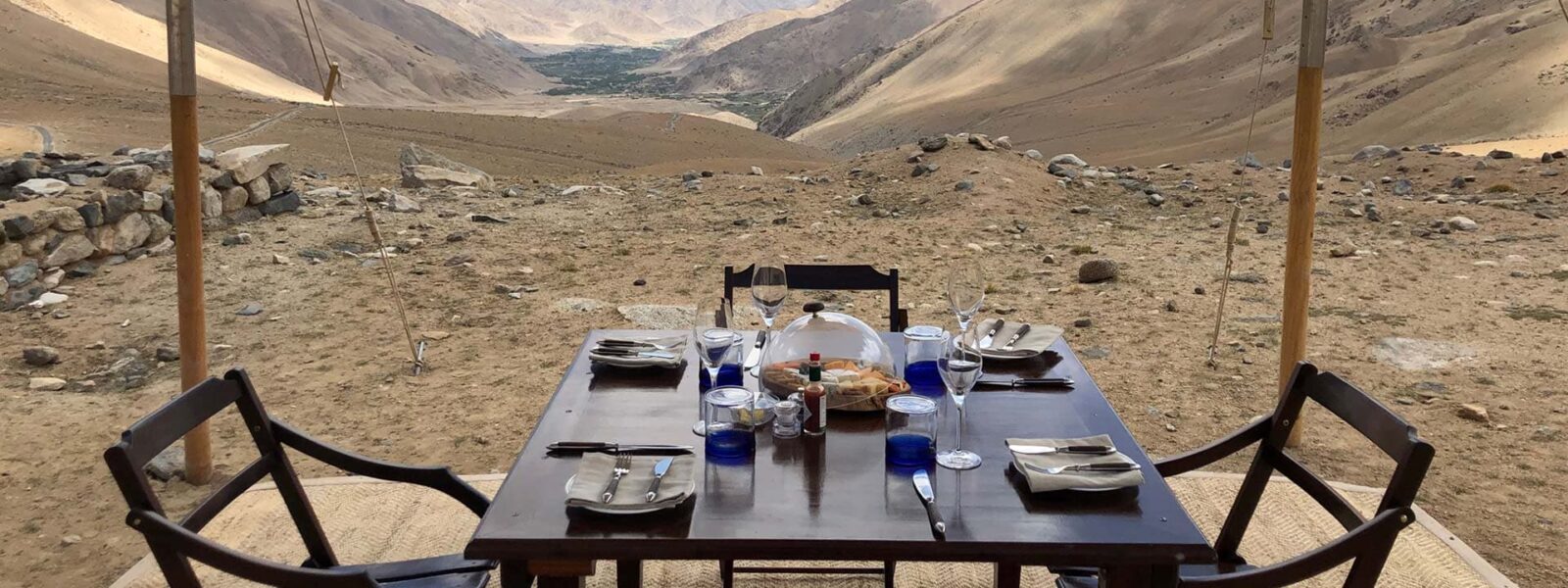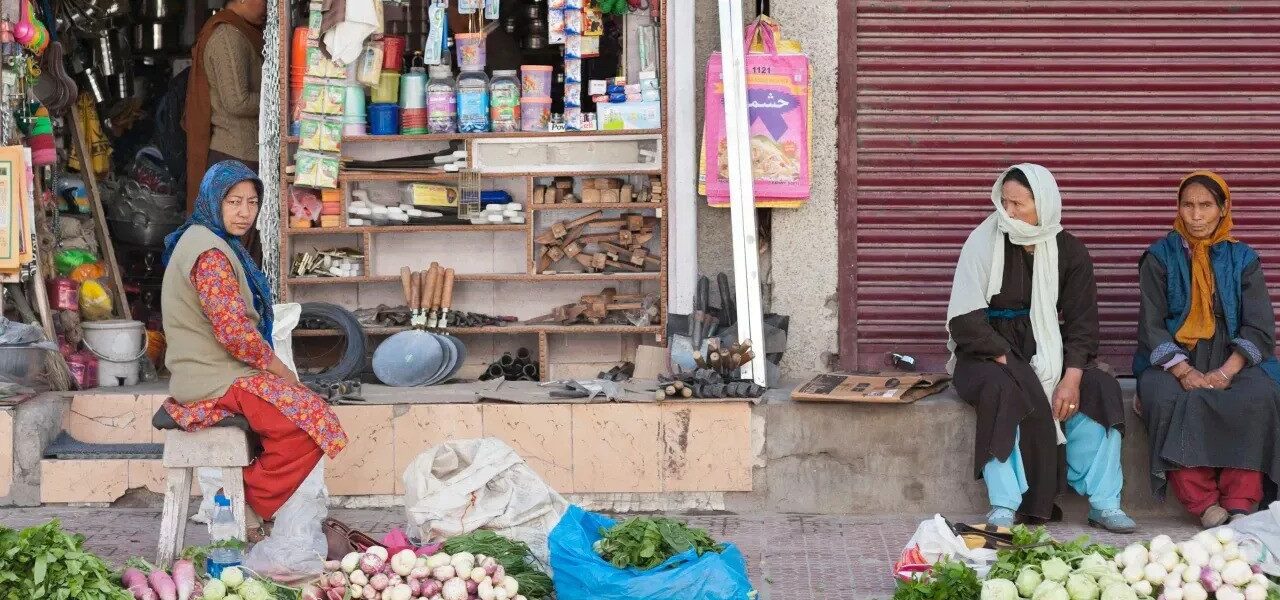Nestled high in the Indian Himalayas, Ladakh is a place like no other — an otherworldly blend of towering mountains, ancient Buddhist monasteries, and timeless desert valleys. For first-time travelers, the journey to Ladakh is more than a trip — it’s a shift in perspective. Whether you are drawn by its raw landscapes, spiritual calm, or thrilling adventure routes, Ladakh promises a travel experience that will leave an imprint on your soul.
This guide is crafted for those who are new to Ladakh. It’s tailored with practical insights and handpicked locations that are beginner-friendly yet deeply authentic. We will walk you through the high passes and tranquil lakes, into bustling bazaars and whispering gompas, making sure your first encounter with Ladakh is nothing short of unforgettable.
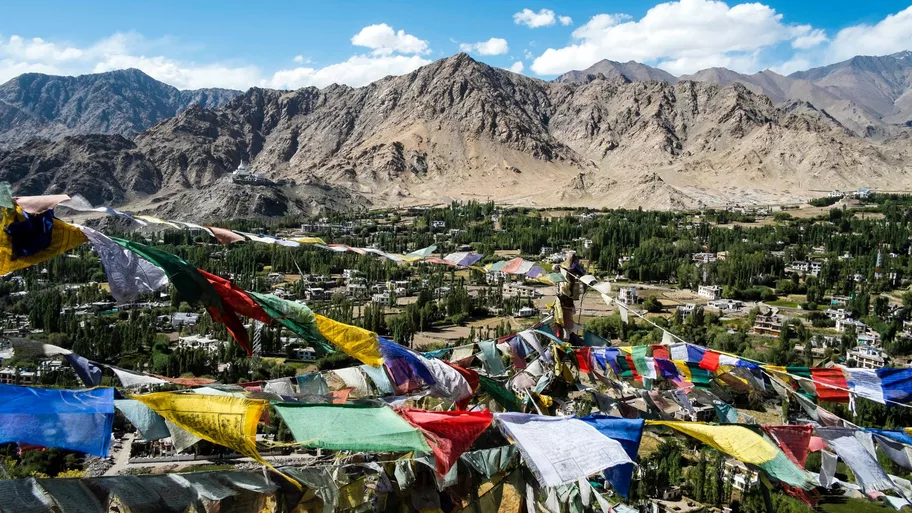
Why Ladakh is the Perfect Introduction to the Himalayas
Ladakh isn’t just a destination — it’s an initiation into the magic of the mountains. Unlike the chaotic rush of popular hill stations, Ladakh offers wide, silent spaces and an overwhelming sense of scale. For newcomers to high-altitude travel, it’s surprisingly manageable with the right guidance. You’ll find clean homestays, local taxi networks, and a welcoming culture that gently eases you into the highland rhythm.
From May to September, the region opens its arms to travelers, revealing sparkling rivers, ancient forts, and a culture that’s as rich as the landscape is stark. For those concerned about safety, health, or connectivity — Ladakh is one of the safest regions in India, with a strong tourist infrastructure and friendly locals who treat visitors like guests of honor.
What This Guide Covers
This travel column explores the top places to visit in Ladakh for first-time travelers, highlighting must-see locations in Leh, Nubra Valley, Pangong Lake, and more. You’ll also get practical tips on where to stay, how to acclimatize, and what to expect during your journey. Each section is designed to help you build a personalized itinerary that suits your pace and interests.
Whether you’re a solo traveler looking for peace, a photographer chasing the perfect sunrise, or a couple on your first Himalayan adventure, Ladakh has a place for you. So pack light, breathe deep, and prepare to step into a world that exists far beyond the edges of the ordinary map.
Let’s begin this journey — slowly, thoughtfully, and wide-eyed — into the land known as the Land of High Passes.
Best Places to Visit in Leh and Around
If you’re visiting Ladakh for the first time, your journey almost always begins in Leh — the region’s largest town and cultural heartbeat. Perched at over 3,500 meters above sea level, Leh is more than just a practical base for acclimatization. It’s a historical gem, surrounded by craggy ridgelines, ancient palaces, bustling marketplaces, and monasteries steeped in centuries-old rituals.
For beginners, Leh is a gentle welcome to the altitude and rhythm of Ladakh. With reliable infrastructure, charming cafes, and local markets, it provides both comfort and character. From here, you can make short excursions to some of the region’s most iconic landmarks without the stress of long drives or tough treks.
Leh Palace – The Overlook of the Old Kingdom
Standing tall above the old town, Leh Palace offers sweeping views of the Indus Valley and snow-dusted peaks in the distance. Built in the 17th century, this nine-story structure once housed the royal family of Ladakh. Although it’s now in partial ruins, walking through its shadowy halls gives a taste of life during Ladakh’s regal past. For photographers and history lovers, the early morning light from the palace terrace is unforgettable.
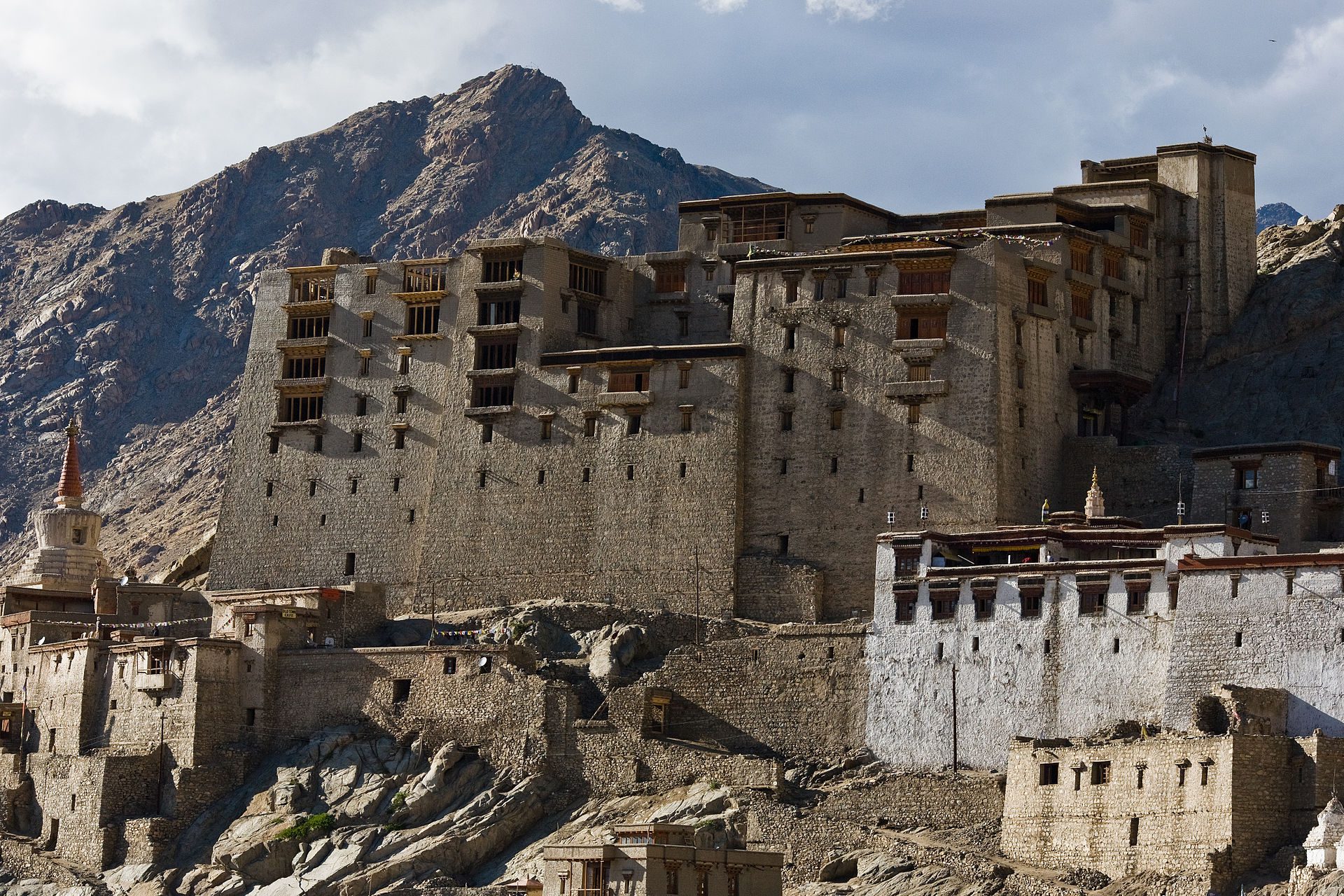
Shanti Stupa – Serenity at Sunset
A short uphill drive from the main town brings you to Shanti Stupa, one of the most peaceful places in Leh. Built by Japanese Buddhists as a symbol of world peace, this white-domed stupa overlooks the entire Leh valley. Come at sunset for an awe-inspiring view that transforms the landscape into shades of amber and gold. It’s an ideal spot for quiet reflection, meditation, or simply soaking in the surreal beauty of the Himalayas.
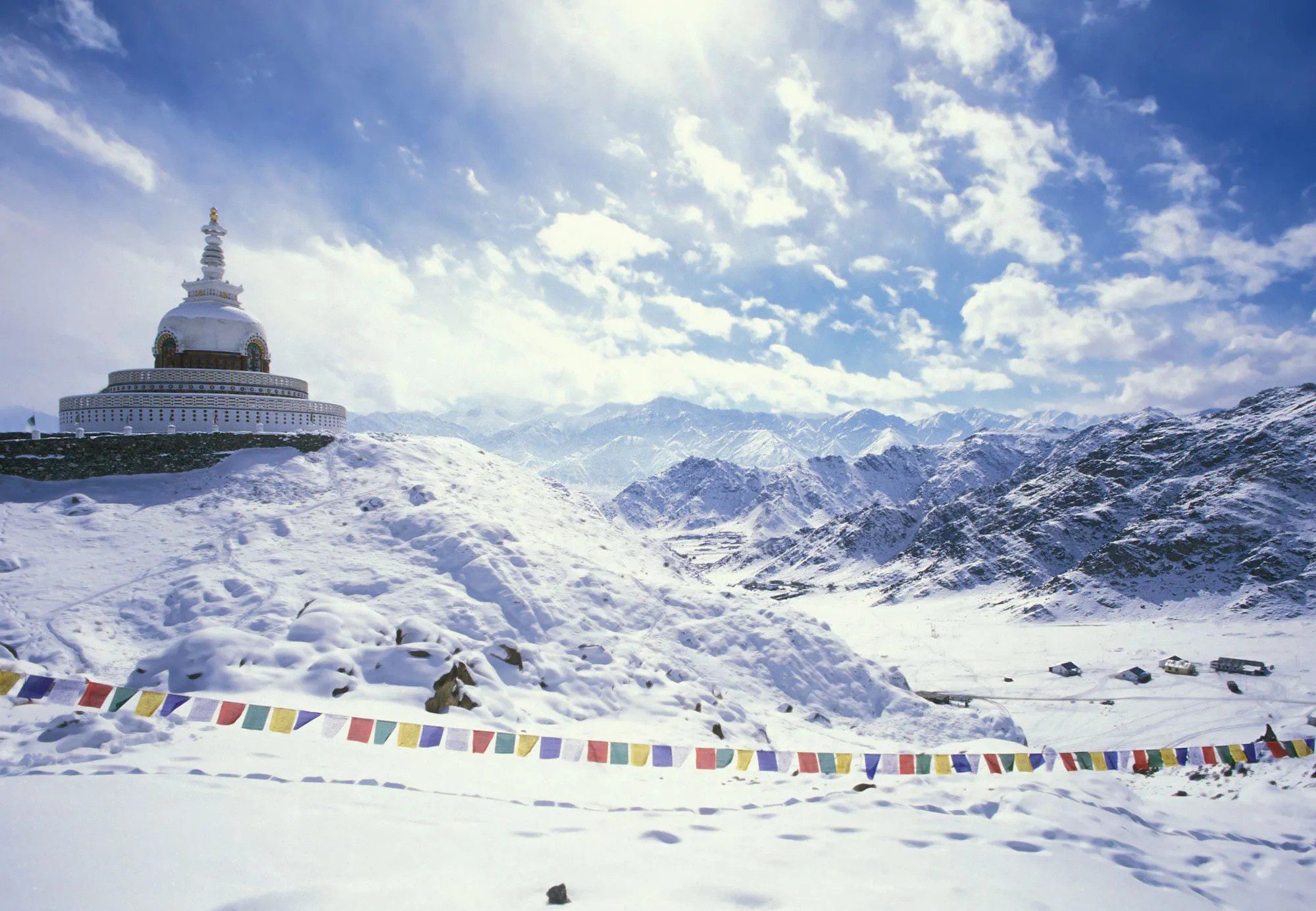
Leh Market – Culture in Motion
No visit to Leh is complete without a stroll through the Leh Main Bazaar. This vibrant market is where tradition meets today — locals in gonchas (traditional robes) brush shoulders with backpackers, monks, and mountain guides. You’ll find everything from handmade Pashmina shawls and Tibetan prayer wheels to apricot jams and Ladakhi jewelry. Grab a cup of butter tea or sit down at a rooftop café to watch life unfold at 11,000 feet.
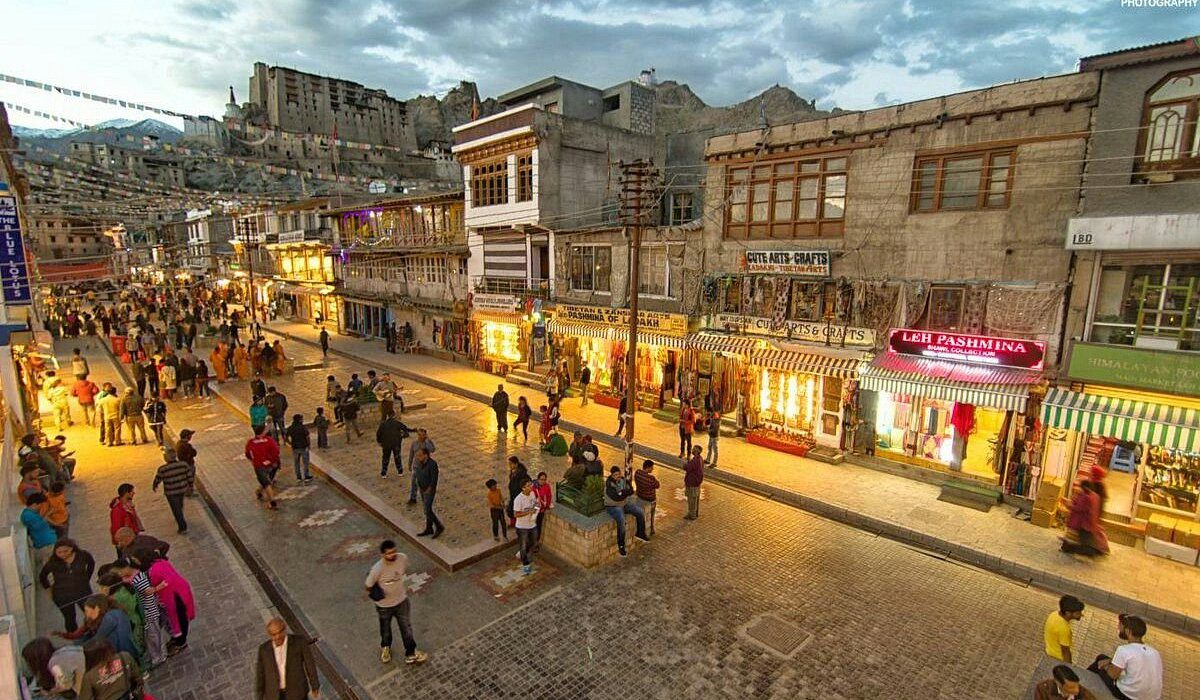
Spituk Monastery – Windswept Wisdom
Just 8 kilometers from town, Spituk Monastery is a beautiful introduction to Ladakh’s spiritual heritage. Perched on a hill overlooking the Indus River, this 11th-century gompa features ancient statues, thangka paintings, and a serene prayer hall that smells faintly of incense and yak butter. It’s a peaceful stop, perfect for travelers curious about Tibetan Buddhism or looking for a quiet spot before heading to higher ground.
These nearby attractions make Leh a rich starting point for your Ladakh journey — accessible, inspiring, and full of character. Whether you spend two days or a full week here, the experiences will stay with you long after you descend from the mountains.
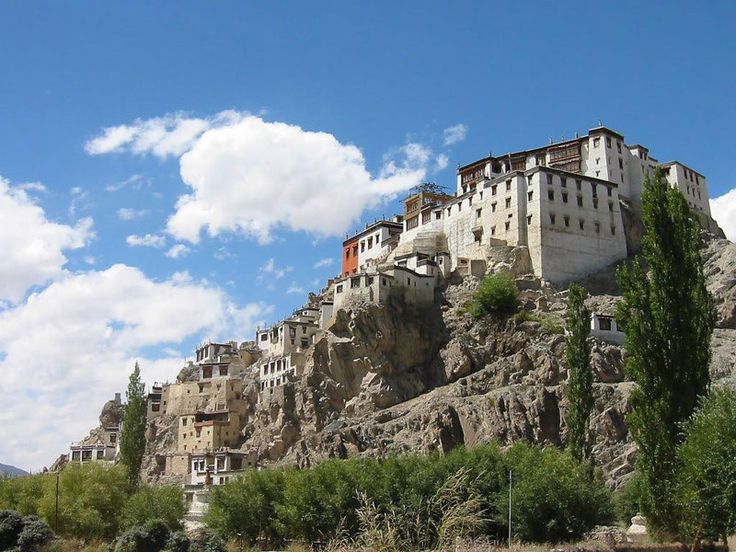
High-Altitude Experiences Not to Miss
Ladakh’s true soul lies beyond the borders of Leh. As you journey over winding roads and mountain passes, you enter a realm of surreal beauty — where deserts meet glaciers, rivers shimmer beneath barren cliffs, and ancient monasteries cling to hillsides like timeless sentinels. For first-time travelers, these high-altitude destinations offer unforgettable experiences without the need for strenuous trekking or technical climbs.
Khardung La – Crossing One of the World’s Highest Roads
If you’re seeking a taste of adventure without pushing your limits, then a drive over Khardung La Pass is a must. Towering at over 5,300 meters, this legendary mountain pass connects Leh to the Nubra Valley and is one of the highest motorable roads on Earth. The journey itself is dramatic, with views of snow-draped peaks, prayer flags fluttering in the wind, and a constant reminder of just how vast Ladakh truly is.
First-timers are advised to take it slow. The oxygen is thinner up here, so acclimatization in Leh beforehand is essential. Still, the sense of achievement — and the panoramic vistas — make this one of the most memorable moments of any Ladakh trip.
Nubra Valley – Where Sand Dunes Meet Snowcaps
Descending from Khardung La, the landscape transforms unexpectedly into the arid beauty of the Nubra Valley. This cold desert, with its rolling dunes and double-humped Bactrian camels, feels more Central Asian than Indian. Villages like Hunder and Diskit offer quiet homestays, friendly smiles, and an unhurried pace of life.
Stop by Diskit Monastery to witness the towering statue of Maitreya Buddha overlooking the valley. It’s a powerful place for reflection. In the evenings, the skies here are pitch-black and studded with stars, making Nubra one of Ladakh’s best locations for stargazing and night photography.

Pangong Lake – The Most Iconic Landscape in Ladakh
When people imagine Ladakh, they often picture the stunning turquoise expanse of Pangong Lake. Stretching from India into Tibet, this 134-km-long lake is mesmerizing in its ever-changing hues — from deep blue to vivid green to steely grey depending on the sky above.
While Pangong is now famous thanks to its appearance in films, it remains a place of quiet majesty. Camps and eco-resorts are dotted along the lake’s edge, and the sunrise here is nothing short of magical. For first-time travelers, spending a night here is the highlight of many Ladakh itineraries — just make sure to bundle up, as nights can be very cold even in summer.
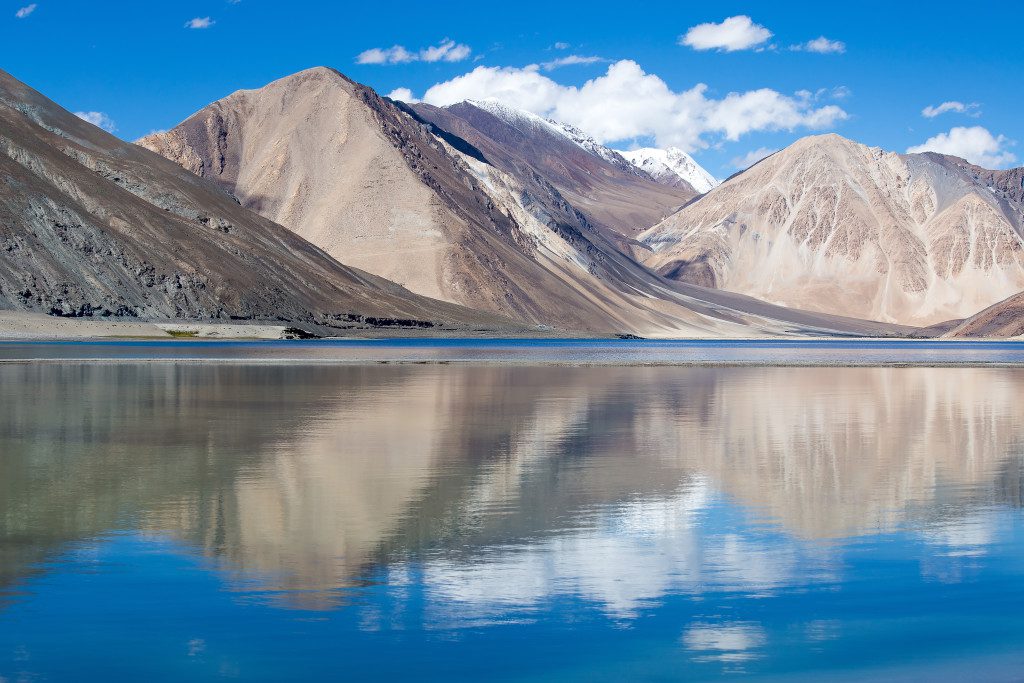
Tso Moriri – Ladakh’s Hidden High-Altitude Jewel
Less visited than Pangong but arguably more pristine, Tso Moriri sits quietly at over 4,500 meters in the Changthang region. The lake is protected as part of a wetland reserve and is home to migratory birds like black-necked cranes and bar-headed geese.
For travelers who want to go deeper and escape the usual circuit, Tso Moriri is a soul-stirring detour. The journey here offers glimpses of nomadic Changpa herders, wide-open plains, and solitude that is hard to find elsewhere. It’s a perfect destination for photographers, wildlife lovers, and those seeking peace in the embrace of nature.
Each of these places — from mountain passes to reflective lakes — captures a different facet of Ladakh’s magic. For first-time travelers, they offer a balance of accessibility and adventure, beauty and cultural depth. Together, they form the essence of what makes Ladakh unforgettable.
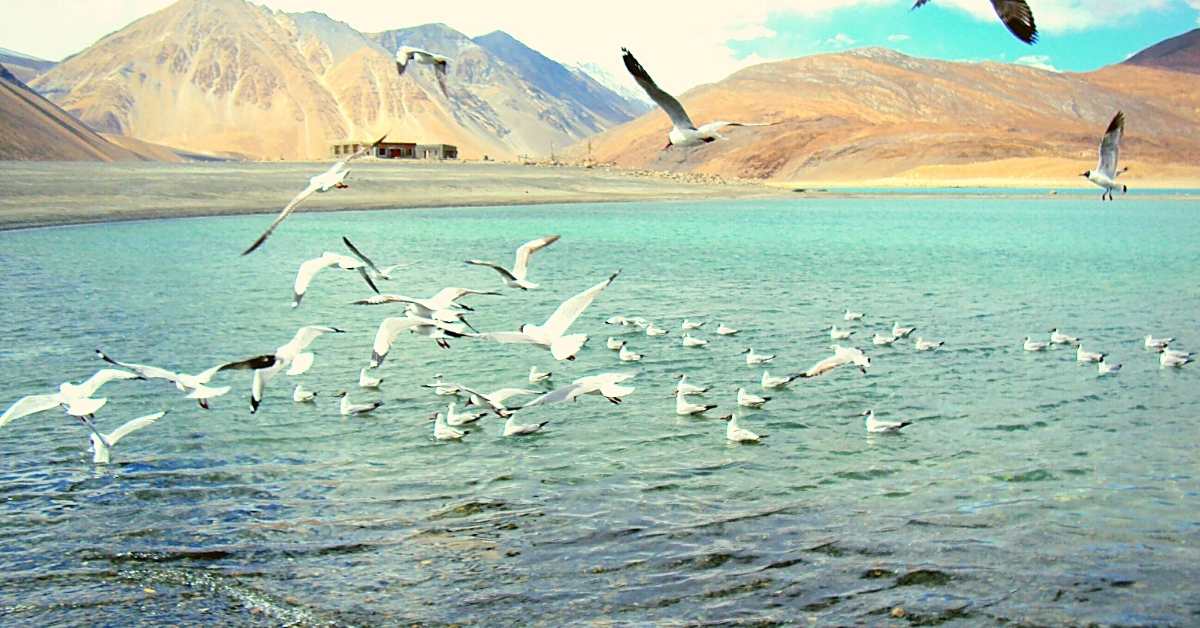
Must-Visit Monasteries for Culture Seekers
Ladakh is a land of silence and chant, of stone and prayer flag, where ancient monasteries dot the windswept hills like sacred watchtowers. For first-time travelers, these spiritual sanctuaries offer more than just beautiful architecture — they are living museums of Ladakhi culture, faith, and resilience. Visiting these gompas (monasteries) not only adds cultural depth to your itinerary, but also offers peaceful moments of connection amid dramatic landscapes.
Hemis Monastery – The Spiritual Heart of Ladakh
Often referred to as Ladakh’s most famous monastery, Hemis Monastery lies tucked away in a quiet valley about 45 kilometers from Leh. This 17th-century monastery is the largest in the region and home to hundreds of monks who follow the Drukpa lineage of Tibetan Buddhism. Its courtyards come alive during the annual Hemis Festival, where masked dances celebrate the triumph of good over evil.
Even outside of festival time, Hemis is a powerful experience. Inside, you’ll find ancient thangka paintings, a massive copper statue of Guru Padmasambhava, and quiet prayer halls filled with flickering butter lamps. It’s a place where time seems suspended — perfect for curious travelers and spiritual seekers alike.
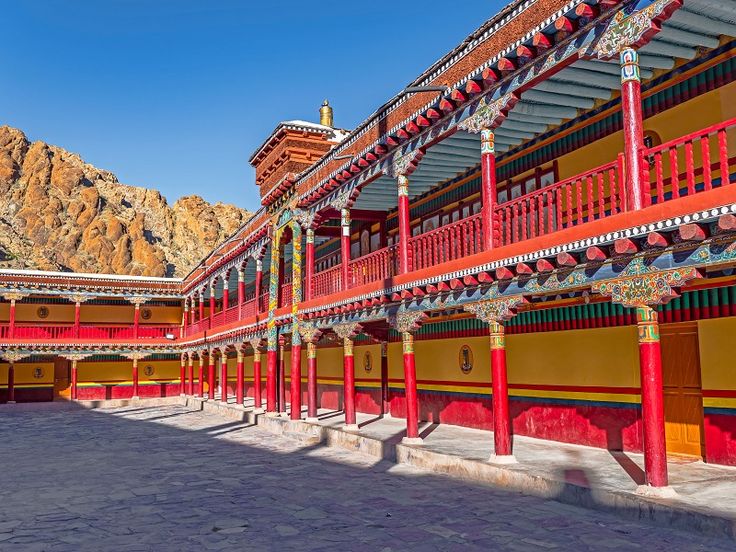
Thiksey Monastery – The Miniature Potala
Rising gracefully on a hilltop about 19 kilometers from Leh, Thiksey Monastery is often compared to Tibet’s Potala Palace due to its multi-level construction and commanding presence. As you climb its steps, you’re rewarded with panoramic views of the Indus Valley — a sweeping canvas of gold and blue.
Inside, the monastery holds a 15-meter-high statue of Maitreya Buddha — one of the largest in Ladakh — along with numerous chapels, libraries, and a rooftop café where you can sip tea with a view. For photographers and early risers, sunrise at Thiksey is a must. The soft morning light pouring through incense mist creates an unforgettable scene.

Lamayuru Monastery – Moonland Mysticism
Further afield, between Leh and Kargil, lies the surreal village of Lamayuru. The landscape here shifts into strange, undulating formations that locals call “Moonland” — and in the heart of this terrain stands the ancient Lamayuru Monastery.
Believed to be one of the oldest monastic sites in Ladakh, Lamayuru is steeped in legends and built on cliffs that defy gravity. Its prayer halls and stupas are weathered by centuries of wind, yet the spiritual energy here is as strong as ever. Visitors often describe it as one of the most mystical places in Ladakh — a perfect stop for those seeking both visual wonder and quiet reflection.

Other Monasteries Worth a Visit
If time allows, consider short visits to Shey Monastery, once a royal palace, or the lesser-known Stakna Monastery, which offers solitude and stunning views over the Indus River. Even the small roadside shrines you pass along the way carry centuries of devotion in every stone.
For travelers seeing Ladakh for the first time, these monasteries offer more than just history — they are living, breathing parts of the region’s spiritual fabric. Their chants, murals, and mountain-perched silhouettes will stay with you long after you leave.
Where to Stay in Ladakh for First-Time Visitors
Finding the right place to stay can shape the entire rhythm of your Ladakh journey — especially if it’s your first time visiting this high-altitude wonderland. Fortunately, Ladakh offers a wide range of accommodations that suit every style of traveler, from rustic adventurers to comfort-seeking explorers. Whether you’re drawn to mountain-view homestays, heritage guesthouses, or eco-friendly camps by the lake, there’s something here for every kind of soul.
Homestays – Live the Local Way
For travelers seeking authenticity, homestays in Ladakh are the most rewarding choice. Staying with a local family in villages like Nubra, Turtuk, or Uleytokpo allows you to connect with Ladakhi traditions in the most personal way. Share simple but hearty meals of thukpa or skyu, sip butter tea in a sun-warmed kitchen, and fall asleep under thick yak-wool blankets while the silence of the Himalayas wraps around you.
Homestays are particularly recommended for beginners because they offer warmth, human connection, and a safe environment to acclimatize slowly. Most hosts are experienced in welcoming travelers, and many also offer help with local transport and permits.
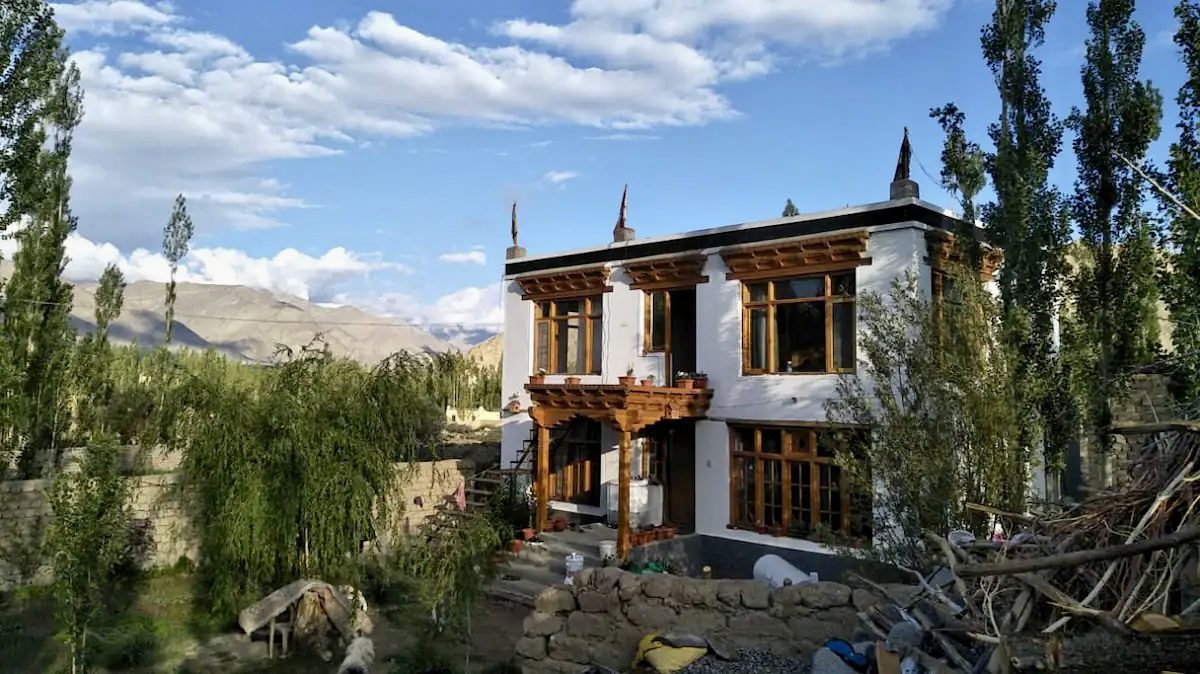
Guesthouses and Boutique Hotels in Leh
If you prefer staying close to amenities, Leh’s guesthouses and boutique hotels provide excellent value and comfort. Areas like Changspa and Fort Road are popular with first-time visitors due to their easy access to restaurants, cafes, ATMs, and travel agencies.
These properties usually feature warm hospitality, traditional décor, and peaceful gardens or rooftop views. Many offer complimentary breakfasts and guidance for day trips to places like Magnetic Hill, Shey Palace, or Thiksey Monastery. Some standouts even offer yoga classes, reading lounges, or Ladakhi cooking lessons — perfect for slow travelers or those who want to balance adventure with reflection.
Camps Near Pangong and Nubra – For the Adventurous Heart
For a more immersive experience, consider spending a night in one of the eco-camps near Pangong Lake or Nubra Valley. These camps range from basic alpine tents to luxury setups with heating, en-suite toilets, and panoramic views of the stars. Staying by the lake or amid the sand dunes offers a level of serenity that hotel walls can’t contain.
Keep in mind that temperatures drop significantly at night in these areas, even during summer. Bring proper thermal layers, and double-check that your camp provides extra blankets or sleeping bags. While Wi-Fi is rare, the uninterrupted connection to nature more than makes up for it.
Tips for Booking Your Stay in Ladakh
- Book your Leh accommodation in advance, especially during peak months (June to August).
- If you’re arriving by air, choose a stay within Leh town for easy access and gentle acclimatization.
- For offbeat stays, use platforms like Booking.com or contact guesthouses directly via WhatsApp or email.
- Always check if your stay includes meals — remote locations often have no restaurants nearby.
- Confirm heating and hot water availability, especially at altitudes above 4,000 meters.
In Ladakh, where landscapes dominate the senses and the pace of life slows to a whisper, your accommodation becomes more than just a place to sleep — it becomes part of the journey itself. Choose wisely, stay curiously, and let every night bring you closer to the spirit of the mountains.
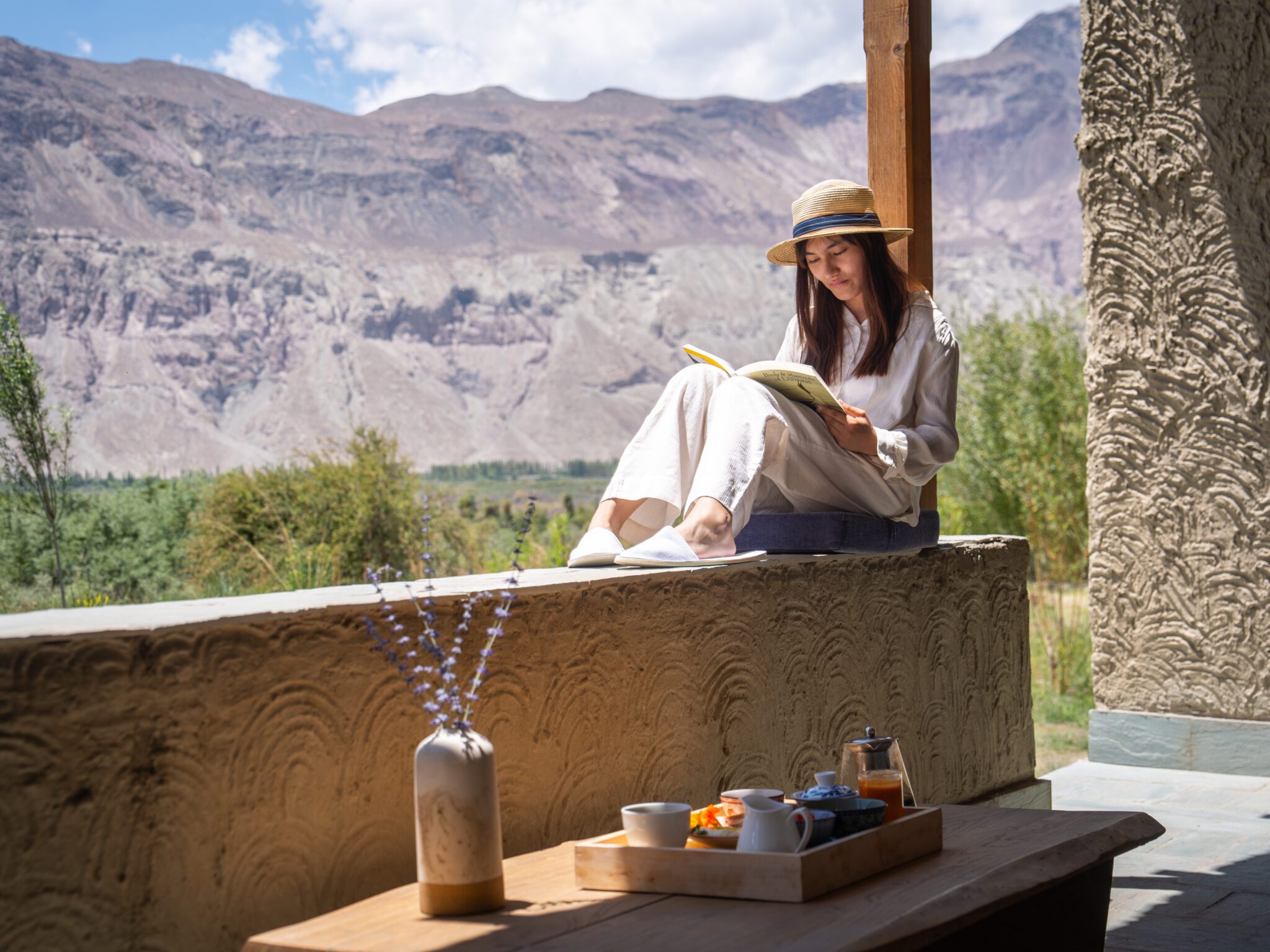
Practical Travel Tips for First-Time Visitors
A trip to Ladakh is unlike any other journey in India. The high altitude, remote location, and distinct culture make it a truly transformative experience — but it also requires mindful preparation, especially if you’re visiting for the first time. These practical travel tips will help you navigate the land of high passes with comfort, confidence, and respect.
Acclimatization – Slow Down and Breathe Easy
The air is thinner in Ladakh, and your body needs time to adjust. Whether you arrive by road or air, acclimatization is non-negotiable. Spend your first 48 hours in Leh taking it easy: walk slowly, stay hydrated, avoid alcohol, and rest often. Symptoms of Acute Mountain Sickness (AMS) include headaches, fatigue, dizziness, and nausea — all of which are common if you don’t take proper precautions.
Many travelers choose to stay in Leh for two nights before heading to higher places like Pangong Lake or Tso Moriri. This not only allows your body to adapt but gives you time to explore the monasteries, local cafes, and markets in Leh at a relaxed pace.
Best Time to Visit Ladakh
The ideal window for a first Ladakh trip is from May to September. This is when the mountain roads are clear, temperatures are more forgiving, and most tourist services are operational. July and August offer lush views of the valleys, while September brings fewer crowds and crisp, golden light perfect for photography.
Winter in Ladakh — while magical — is best left for experienced travelers, as temperatures can plunge below freezing and many villages become inaccessible. For your first trip, stick to the warm, snow-free months when Ladakh is at its most welcoming.
Permits – What You Need and Where to Get Them
Ladakh is a sensitive border region, and several areas like Nubra Valley, Pangong Lake, Tso Moriri, and Hanle require Inner Line Permits (ILP). Indian citizens can easily apply for these online via the Leh District Permit Portal, while foreign nationals need to apply in person through a registered travel agent.
Carry multiple photocopies of your permits and government-issued ID — these will be required at army check posts along the way. If you’re traveling in a group or with a local guide, they usually assist with the permit process.
Health, Safety, and Local Etiquette
While Ladakh is one of the safest places in India for travelers, especially solo and female travelers, it’s wise to take basic precautions. Stick to bottled or filtered water, carry a basic first-aid kit, and always inform someone of your travel plans when heading to remote areas.
When visiting monasteries, dress modestly and speak quietly. Avoid touching religious artifacts or taking photos of monks without asking. If offered butter tea or tsampa in a village home, accept with gratitude — hospitality in Ladakh is considered sacred.
Connectivity and Cash
Mobile connectivity is limited in Ladakh. Only postpaid SIM cards work in the region, and BSNL or Jio are your best bets. Many remote areas have no signal at all, which is part of the charm — embrace the digital detox.
ATMs are mostly available in Leh, so carry enough cash when heading to Nubra, Pangong, or Tso Moriri. Some guesthouses and shops now accept UPI, but it’s not reliable everywhere.
Being well-prepared means your first trip to Ladakh won’t be filled with stress — only awe, serenity, and the thrill of discovery. Travel slow, stay humble, and let Ladakh show itself to you in layers, just as its mountains do.
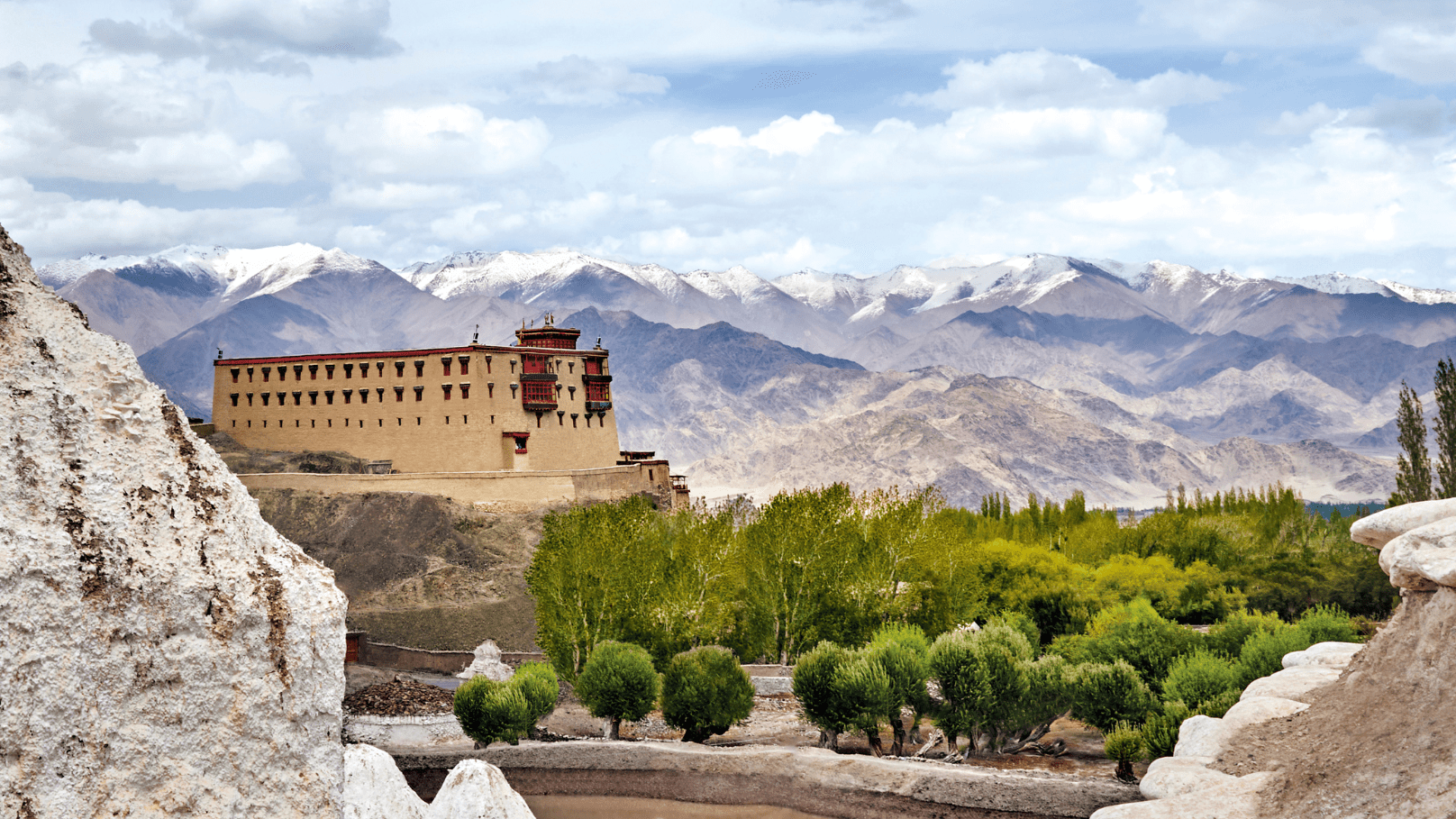
Suggested Itinerary for First-Time Ladakh Travelers
One of the most common questions first-time visitors ask is: “How many days do I need in Ladakh?” The answer depends on how much time you can spare — but even in as few as five to seven days, you can witness Ladakh’s highlights without rushing. Below is a sample Ladakh itinerary for beginners, balancing acclimatization, exploration, and rest.
Day 1–2: Arrival in Leh and Acclimatization
Fly into Leh and take your time. Rest, drink lots of water, and let your body adapt to the altitude. Spend your first day exploring gently: visit Shanti Stupa for sunset, stroll around the Leh Main Bazaar, and sip warm butter tea at a local café.
On Day 2, consider short outings to Thiksey Monastery, Shey Palace, and the Hall of Fame Museum — all within easy reach of Leh. Keep things light; your body will thank you.
Day 3: Drive to Nubra Valley via Khardung La
Your real journey begins as you cross the Khardung La Pass, one of the highest motorable roads in the world. The road to Nubra Valley offers jaw-dropping views and dramatic mountain scenery. Arrive in Hunder or Diskit by afternoon, check into a homestay or guesthouse, and enjoy a peaceful walk through the sand dunes or a short camel ride at sunset.
The night skies in Nubra are spectacular — perfect for stargazing if weather permits.
Day 4: Nubra to Pangong Lake via Shyok Route
On Day 4, take the scenic route through Shyok to reach Pangong Lake — a mesmerizing body of water that shifts shades of blue and green as the light changes. Most travelers arrive by early afternoon. Spend time walking along the shore, photographing the vastness, and watching the sky change colors at dusk.
Sleep in one of the many lakeside camps. It’ll be cold, but unforgettable.
Day 5: Return to Leh
After a lakeside sunrise, make your way back to Leh. It’s a long but beautiful drive through the mountains, with stops for tea and photos. Once back in Leh, take the evening to rest, shop for souvenirs, or visit Leh Palace if you haven’t already.
Day 6 (Optional): Day Trip to Hemis and Stakna Monasteries
If you have an extra day, take a gentle drive toward the Indus Valley to explore Hemis Monastery and Stakna Monastery. These quiet corners offer insight into the spiritual life of Ladakh and are less crowded than their more famous counterparts.
Day 7 (Optional): Departure or Local Exploration
Depending on your flight or onward journey, spend your final morning enjoying a rooftop breakfast in Leh or walking along the banks of the Indus River. If you prefer more activity, visit the Magnetic Hill or Gurudwara Pathar Sahib nearby.
This itinerary is ideal for travelers who want a balance of exploration and acclimatization. It can be extended to include Tso Moriri or Zanskar Valley for longer stays. The key is to move slowly, rest well, and allow Ladakh to reveal itself layer by layer.
Whether you’re here for a week or just a few days, this beginner-friendly itinerary ensures you witness the best of Ladakh — from high passes and silent monasteries to luminous lakes and local hospitality.

FAQs – Ladakh for First-Time Visitors
Still have questions about your first journey to Ladakh? You’re not alone. Below are some of the most frequently asked questions by travelers planning their maiden voyage to this high-altitude paradise. These answers are designed to help you travel smarter, safer, and with greater confidence.
Is Ladakh safe for solo travelers and first-time visitors?
Yes, Ladakh is one of the safest regions in India for both solo travelers and families. The local people are welcoming, tourism infrastructure is well-developed, and violent crime is extremely rare. That said, always inform someone of your plans when heading to remote areas, and carry essential medications and supplies with you.
How many days should I plan for my first Ladakh trip?
A minimum of 6 to 7 days is recommended for first-time travelers. This gives you enough time to acclimatize in Leh, visit key destinations like Nubra Valley and Pangong Lake, and return without rushing. If time allows, a 10-day trip is ideal to explore additional spots like Tso Moriri or Zanskar.
What is the best time of year to visit Ladakh?
The best time to visit Ladakh is from May to September, when the roads are open, and the weather is pleasant. July and August are peak months with lush scenery, while September offers clearer skies and fewer crowds. Winter is magical but best left for experienced travelers due to extreme cold and limited access.
Do I need a permit to travel in Ladakh?
Yes. Inner Line Permits (ILP) are required for visiting places like Nubra Valley, Pangong Lake, and Tso Moriri. Indian citizens can apply online via the Leh Permit Portal. Foreign nationals must apply through a local travel agent in Leh. Always carry printed copies of your permit and ID.
How can I prevent altitude sickness in Ladakh?
The best way to avoid altitude sickness is to ascend gradually and rest for the first 48 hours after arrival in Leh. Drink plenty of water, avoid alcohol and smoking, and take short walks instead of strenuous hikes. If symptoms worsen, seek medical help or descend to lower altitudes.
What should I pack for my Ladakh trip?
Pack warm clothes in layers, even in summer — including a down jacket, thermals, gloves, and a good windproof outer layer. Don’t forget sunscreen, sunglasses, lip balm, reusable water bottles, snacks, and essential medicines. A good power bank and flashlight are also useful for remote areas.
Can I get mobile and internet connectivity in Ladakh?
Only postpaid SIM cards work in Ladakh. BSNL and Jio offer the most coverage, but expect weak or no signal in remote places like Pangong and Tso Moriri. Wi-Fi is available in some hotels and cafés in Leh but may be slow. Embrace the opportunity to unplug — it’s part of the Ladakh experience.
Are there ATMs in Ladakh?
Yes, but they’re mostly located in Leh town. Carry enough cash when traveling to remote regions. Digital payments like UPI are accepted in some shops and cafés, but always have cash as a backup.
Can I travel to Ladakh with children or elderly people?
Yes, but consult a doctor before your trip. Acclimatization is key, so plan a relaxed itinerary and avoid high-altitude spots like Tso Moriri in the first few days. Choose comfortable accommodations and make sure to carry extra warm clothing, medicines, and snacks.
What’s the local food like in Ladakh?
Ladakhi cuisine is hearty, simple, and delicious. Try thukpa (noodle soup), skyu (hand-rolled pasta), and butter tea. Vegetarian options are widely available. In Leh, you’ll also find Tibetan, Indian, and Western dishes in cafés and restaurants catering to tourists.
Planning your first trip to Ladakh doesn’t have to be overwhelming. With the right information, a flexible mindset, and a spirit of adventure, your journey to the land of high passes will be one of the most rewarding experiences of your life.

